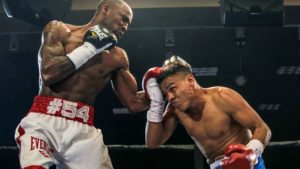Tips for teaching BJJ
So you’ve started teaching Brazilian Jiu-jitsu. Congratulations! You’ll find that having to teach will help you get a much deeper understanding of jiu-jitsu, since you have to explain it to someone else.
Below are some tips for beginning teachers.
Time management
Be flexible with your time management.
e.g. you might prepare a certain amount of material that’s enough to fill the time if everyone catches on to the material pretty fast. If during teaching, you notice people are having lots of problems, then you should probably cut some of the material and take enough time to make sure at least everyone has the first part down properly.
The worst thing would be to be stubborn and go through all the material too fast and then they can’t do anything properly.
Balancing the amount of details
Let’s say you wanted to teach the armbar from the guard and you have too many details for anyone to remember in one go. It would be a bad idea to go through all the details and have the students forget most of them and feel overwhelmed. Instead, first teach how to get the right arm positioning and hip movement, and then have them practice that. Only once everybody is good with that, then show putting the leg over the face, preventing the stack, and finishing.
As a general rule, three is a good number of techniques to show and a good number of major details to show for each technique before letting the students try it. There’s something about that number that seems to work well for retention in the human brain. See these links for more:
How to Use the ‘Rule of Three’ to Create Engaging Content
Teaching Tip- Gimme Three Steps
Balancing praise and criticism
You should have a 2:1 or more ratio of compliments to criticisms for each student. If students get too many criticisms, they get discouraged. So even if a student is terrible and is messing up a lot, try to find something that he’s doing right and mention that too. Don’t try to fix everything he’s doing wrong in one session. Just fix the one or two most important things. If you try to fix too much, he may fix problem 1 and 2, but then when he’s trying to fix problem 3, he starts exhibiting problem 1 again.
Viewing angle
Pay attention to the angle of the students when you’re demonstrating the move. Make sure you and your demo partner are positioned such that most people can see the right stuff. Don’t be afraid to tell the students that are on the wrong side to move around to the right side so they can see the important stuff. This is one of the most common problems for beginning teachers.
Class structure
There are many ways to structure a class that are valid. Just make sure you think over how the techniques you show interrelate, and how best to get the students to absorb them. Some ideas are to have the students practice each technique in order, to mix in positional drills with increasing resistance, or to have the partner feed the student a random trigger action so the student can choose the correct response. It also is beneficial to explain the ‘why’ of each movement that you do. If a student understands why you put your hand in a particular place, it helps them remember to do it, and it may also help them understand what to do in other situations. I would recommend always doing some kind of isolation drill that forces the students to try to do the moves that they just learned, but against a resisting partner. When you try to do the move against a resisting opponent, you retain it much better.
Setup / preconditions
Many techniques are predicated upon a certain body positioning by the opponent. A particular move may only work if the opponent has their head up, or down, or is putting their weight more to one side or another. Make sure to explain very clearly and reiterate the preconditions for doing the move. If one training partner isn’t putting their body in the right position, his or her partner will be unable to do the technique properly. Make sure to correct people who aren’t putting their body in the right position. If a technique isn’t working for a person, try doing the move yourself on their partner, and you may realize that the partner isn’t setting them up for success.
Imagery / analogy
In boxing, ‘answering the phone’ is a common term used to describe keeping one’s hand up by the ear to defend the head. In the image below, the fighter on the right is using this technique. Analogies like these greatly help retention of key concepts.

Flexibility
There are many ways to do a technique. For a given technique, Marcelo Garcia, Buchecha, Jacare, and Roger Gracie may all do it different ways, but none of them are wrong. If a student chooses to do a slight variation, with a different grip or arm positioning, I would explain to them why I do it my way, and the pros and cons vs doing it their way, but if they choose to keep doing it their way, I don’t have a problem with that. Forcing them to do it your way is problematic because it kills their sense of creativity and ownership over their own jiu-jitsu.
